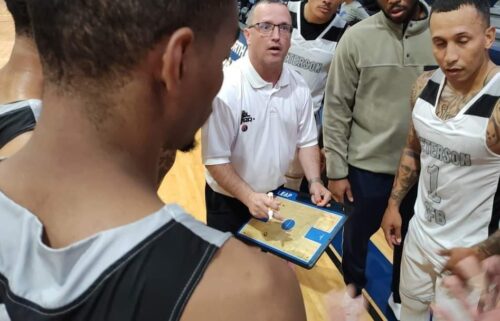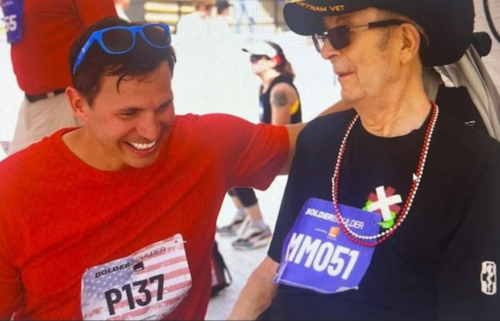Tyre Nichols’ death is just latest instance of video contradicting police accounts
By Eric Levenson, Madeline Holcombe and Josh Campbell, CNN
The initial Memphis police statement on the events of January 7 was vague.
There had been a “confrontation” between officers and a driver suspected of reckless driving, police said. The suspect fled the scene on foot, and another “confrontation occurred” as officers tried to take him into custody, the statement said.
“Afterward, the suspect complained of having a shortness of breath, at which time an ambulance was called to the scene,” police said. He was in critical condition, police said, and died three days later.
Videos of the arrest show what that second “confrontation” actually entailed: Officers with the police department’s specialized SCORPION team punched, kicked, pepper-sprayed and used a baton on Tyre Nichols while he was restrained.
After the beating, as Nichols lay slumped and motionless against a car, officers walked around the scene ignoring him, according to the videos. About 23 minutes passed from the time Nichols appeared to be subdued until a stretcher arrives on scene, the videos show.
Further, an initial police report from the hours after his stop suggested Nichols was violent, made no mention of the officers punching and kicking him, and alleged other claims of Nichols’ actions contradicted by the videos.
Five officers have now been fired and indicted on charges of second-degree murder in Nichols’ death. Several other police and first-responders have been relieved of duty as the investigation progresses.
The contrast between the initial account and the videos in Nichols’ death is just the latest arrest of a Black person in which the police version was undermined or contradicted by video or witness accounts. Some of these instances, including former Minneapolis police officer Derek Chauvin’s fatal restraint of George Floyd, have led to murder convictions against the officers involved.
“It is a very problematic situation, and this goes back to what we saw with the Derek Chauvin case,” said Justin Hansford, a law professor and the executive director of the Thurgood Marshall Civil Rights Center at Howard University. “Once again we have a huge gap between what was in the police report and the facts that later came out. This issue of believing police reports on their face as they are immediately released is something that we need to reconsider.”
Here are some of the recent cases in which initial police reports and public statements were shown to be incomplete or misleading.
Ronald Greene
The family of Ronald Greene, a 49-year-old Black man, said they were told by Louisiana State Police that he died in a car crash.
Troopers said Greene’s death was “caused by crash-related blunt force chest trauma that resulted in a fractured sternum and ruptured aorta” and said they used force “for their own personal safety and for the safety of the public,” according to court documents.
But videos from police body camera and dash camera told a different story of what happened on the night of May 10, 2019, near the city of Monroe. The footage, obtained by the Associated Press in 2021, shows officers after the crash kicking, tasing and restraining Greene.
Audio from one trooper’s body camera includes a telephone exchange inside his patrol vehicle as he’s leaving the scene. He says Greene was drunk.
“And I beat the ever-living f*** out of him, choked him and everything else trying to get him under control and we finally got him in handcuffs,” trooper Chris Hollingsworth said in the video. He added Greene “was still fighting and we was still wrestling with him trying to hold him down because he was spitting blood everywhere.”
Hollingsworth died in a car crash in September 2020. In December 2022, five law enforcement officers involved in the arrest were indicted on state charges ranging from negligent homicide to malfeasance in office and obstruction of justice.
George Floyd
The initial police news release documenting the arrest of George Floyd in May 2020 simply stated: “Officers were able to get the suspect into handcuffs and noted he appeared to be suffering medical distress. Officers called for an ambulance. The subject, an adult male believed to be in his 40s, was transported to Hennepin County Medical Center where he was pronounced dead.”
The release also noted that no weapons were used by anyone involved.
The report made no mention of Floyd being held down with a knee on his neck for more than 9 minutes.
It wasn’t until cell phone video captured by bystanders was posted that the world heard Floyd crying out that he couldn’t breathe as former Minneapolis police officer Derek Chauvin pinned him down.
The footage went viral, sparking a summer of national protests over policing and racial bias.
One bystander who took video, Darnella Frazier, testified during Chauvin’s trial. “I heard George Floyd saying — I can’t breathe. Please. Get off me. I can’t breathe,” she testified. “He cried for his mom… It seemed like he knew — seemed like he knew it was over for him.”
Several other bystanders also captured video of the encounter, including another high school student, an off-duty firefighter and an employee at the Speedway across the street.
Chauvin was convicted of second-degree unintentional murder, third-degree murder and second-degree manslaughter in the death of Floyd. His sentencing is set for June 25.
Chauvin could face up to 40 years in prison for second-degree murder, up to 25 years for third-degree murder and up to 10 years for manslaughter. Chauvin has no prior criminal record, so Minnesota’s sentencing guidelines recommend about 12 and a half years in prison for each murder charge and about four years for the manslaughter charge.
But the judge in the case recently ruled Floyd’s murder had four aggravating factors, which paves the way for him to sentence Chauvin to longer than the recommended 12 and a half years.
Breonna Taylor
The incident report for the botched police raid that led to the fatal shooting of Breonna Taylor, a 26-year-old Black EMT, said that there was no forced entry when in fact Taylor was killed when officers forced their way into her home on March 13, 2020, in Louisville, Kentucky.
Taylor was struck by bullets six times after her boyfriend, Kenneth Walker, fired one shot at officers serving a warrant. Walker later said he believed the officers to be intruders.
A preliminary Louisville Metro Police Department internal report prepared on the raid that led to Taylor’s death suggested that officers violated department rules by opening fire, even after an officer was hit.
The officers, the investigator wrote, “took a total of thirty-two shots, when the provided circumstances made it unsafe to take a single shot. This is how the wrong person was shot and killed.”
No officers involved in the raid were charged directly in Taylor’s death.
One of the officers at the scene, Brett Hankison, is expected to stand trial in 2022 on charges of wanton endangerment for allegedly firing into an adjacent occupied apartment, according to the state attorney general. Hankison, who was fired in June 2020, pleaded not guilty.
Two other detectives connected to the incident, Myles Cosgrove and Joshua Jaynes, were fired in January.
Walter Scott
In 2015, Walter Scott, 50, was pulled over for a broken taillight by former South Carolina police officer Michael Slager.
According to a police report, Slager engaged in a foot pursuit and used his stun gun before shooting Scott.
Slager fired eight shots, five of which struck Scott. He was pronounced dead at the scene.
Slager claimed he shot Scott because he feared for his life after Scott grabbed his Taser.
But cellphone video taken by a bystander captured Slager chasing Scott. Prosecutors say not only did that video show Slager firing at Scott’s back from 17 feet away, but that it showed him dropping his Taser by Scott’s body.
In court two years later, Slager admitted to using excessive force, acknowledged that he didn’t shoot Scott in self-defense and said his use of force was unreasonable. He pleaded guilty to depriving Scott of his civil rights under the color of law.
In exchange for the 2017 plea, state murder charges, as well as two other federal charges, were dismissed.
He is now serving a 20-year prison sentence.
Laquan McDonald
In the wake of Laquan McDonald’s 2014 fatal shooting by a police officer, 11 Chicago police officers were accused of making false statements to exaggerate the threat he posed. And a former lieutenant who led the shooting investigation allegedly destroyed handwritten notes from witness interviews, the investigative report from Inspector General Joseph Ferguson revealed in 2019.
Police initially said McDonald, a Black teenager, approached officers while armed with a knife and refused verbal commands to drop it, prompting Jason Van Dyke to open fire six seconds after getting out of his squad car. He shot McDonald 16 times in October 2014.
Thirteen months later, a judge ordered the release of the grainy dashboard police camera footage of the shooting, and the fallout was immediate. The footage showed McDonald walking away from officers, rather than charging at them.
Van Dyke was convicted of second-degree murder and 16 counts of aggravated battery with a firearm and was sentenced to 81 months in prison. Four officers were fired and three others were found not guilty on charges of covering up details from the killing.
The-CNN-Wire
™ & © 2023 Cable News Network, Inc., a Warner Bros. Discovery Company. All rights reserved.
CNN’s Nick Valencia contributed to this report.



